A Brief History of Graphic Communication
(Some Dates May Be Approximate)
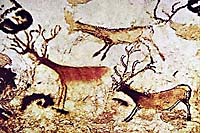
- 35,000 BC
- Cave paintings from Paleolithic to Neolithic periods
-
20,000 BC
- Carved or scratched signs and simple figures called Petroglyphs on cliff walls
at Newspaper Rock, Utah
-
10,000 BC
- Clay tokens in simple shapes developed as first practical system for record keeping
in Mesopotamia
-
5000 BC
- Sumerians invent first written language called Cuneiform, with wedge shaped characters
used to record commerce
-
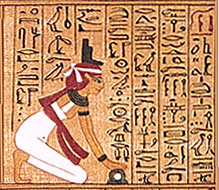
- 3000 BC
- Egyptian hieroglyphic writing, meaning "sacred writing" developed,
which were alphabetic, syllabic and determinative
-
1880 BC
- Code of Hammurabi cuneiform carvings on a tall polished stone stele, recording
law and punishment
-

- 1700 BC
- Phaistos Disc, a terra-cotta disc found in Crete bears 31 groups of characters
-

- 1200 BC
- Phoenicians develop written language based on the principle that one sign represents
one sound
-
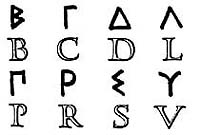
- 1000 BC
- Greeks adopt the Phoenician alphabet but change five consonants to vowels A,E,I,O,U,
creating a true phonetic alphabet
-

- 500 BC
- Roman alphabet, adopted from the Greeks, comprised of 23 letters (ABCDEFGHIKLMNOPQRSTVXYZ)
and simplified letter names to a, b, c
-
200 BC
- Eumenes, king of Pergamus, uses parchment as a substrate
-
197 BC
- Rosetta Stone with translations in two languages and three scripts: hieroglyphic,
demotic and Greek inscriptions
-
10 BC
- Chinese philosopher Wang Ch'ung uses bamboo as a substrate
-
105 AD
- In China, Ts'ai Lun, a high official, reported his invention of paper making to Emperor Ho, using tree bark, cloth and hemp paper
-
300 AD
- The art of Chinese Calligraphy was unified into the "small seal" style
with lines thick and even, more abstract and flowing
-
400 AD
- Wei Tang invents ink using lampblack in China
-
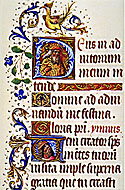
- 400 AD
- Dark Ages begin in Europe, but monks illuminate hand-copied manuscripts in scriptoria

- 530 AD
- Uncial letter forms developed which were a rounder from of capital letters
-

- 600 AD
- Half-uncials style developed which resemble modern day lower case letters.
-
751 AD
- Paper making technology from the Chinese travels to the West via the Silk Route
-
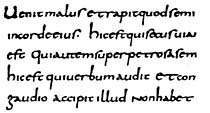
- 800 AD
- Emperor Charlemagne forces adoption of single official writing style called Carolingian minuscules which combined small characters with Roman capitals
-
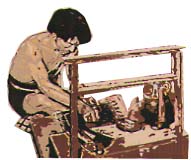
- 1023 AD
- Chinese artisan Pi Sheng makes individual, moveable characters out of clay which
were affixed to a form through heated wax
-
1397 AD
- Bronze moveable type was developed in Korea and soon after produced the first
text printed from type
-



- 1450 AD
- Johann Gutenberg invents moveable type matrices in black letter style consisting
of 300 letters, ligatures, abbreviations and the printing press, and prints 42-line
Bible
-
1450-1500 AD
- Incunabula, meaning 'swaddling clothes', the period of infancy of the new printing
technology
-


- 1470 AD
- Nicholas Jenson produces first Roman typeface, more reminiscent of the classic Roman letters from the column of Trajan
-
1476 AD
- William Caxton produces first book in England in English language
-


- 1500 AD
- Aldus Manutius of Venice creates the Aldine Press and commissions Griffo to design
the first italic style typeface
-
1525 AD
- Trade newsletters develop as an early form of newspapers
-
1550 AD
- Letterpresses widely used for printing
-
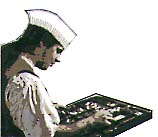
- 1639 AD
- Stephen Daye, a locksmith from England, emigrates to Cambridge, Mass and founds
the first printing establishment in America
-

- 1662 AD
- Census shows 60 printer publishers working in London
-
1685 AD
- William Bradford begins publishing in Philadelphia, PA
-
1704 AD
- First American news weekly 'The Boston News-Letter' published by John
Campbell in Boston, Mass
-
1728 AD
- Benjamin Franklin begins publishing the 'Pennsylvania Gazette', importing
type from England
-
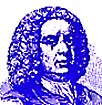

- 1734 AD
- William Caslon sets up his own foundry and strongly influences
English printing
-
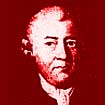

1750 AD
- John Baskerville creates Baskerville typeface and vellum
-
1764 AD
- Pierre-Simon Fournier publishes his 'Manuel Typographique'
introducing the point system, which is still in use today
-


- 1788 AD
- Giambatista Bodoni designs the first modern roman typeface
Bodoni, with thin straight serifs contrasting with bold verticals
-
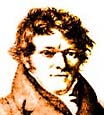
- 1796 AD
- Aloys Senefelder of Germany invents the basic lithographic
process using water absorbant stone, grease, water and ink
-
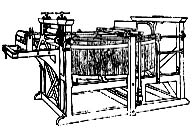
- 1806 AD
- The Fourdrinier brothers perfect a machine to make paper
from ground-wood pulp in a continuous 48" wide roll
-
1822 AD
- Dr. William Church invents the first hot-type composing machine
-
1839 AD
- Daguerreotype photography, a system of developing images on metal plates coated
with silver oxide, developed by Louis Jacques Daguerre in France
-
1875 AD
- Karl Klietsch develops rotogravure printing, using the
intaglio process with an etched copper plate
-
1884 AD
- George Eastman invents roll film and coated photographic paper
-
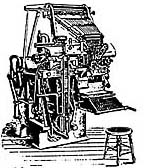
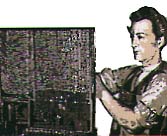
- 1886 AD
- Line-casting keyboard typesetting machine invented by Ottmar Mergenthaler, coined
the 'line-o-type' by Whitelaw Reid, editor of the New York Tribune
-
1888 AD
- William Morris in England establishes craft revival of
printing standards
-
1905 AD
- Ira Rubel develops offset lithography using a rubber blanket to transfer the
image from zinc plate to paper
-

- 1906 AD
- Ludlow line caster invented for headline size type
-


- 1914 AD
- Frederic W. Goudy, a prolific typeface designer, creates
his best-known face, Centaur
-

- 1928 AD
- 'Die Neue Typographic', by Jan Tshicbold, introduces
the Sans Serif type termed 'Grotesque' by traditional typographers
-
1950 AD
- First CTR (cathode ray tube) typesetter
-
1960 AD
- Publishing makes transition from hot type to cold type
-
1962 AD
- Wes Clark assembles first stand-alone computer
-
1963 AD
- First application of a mouse used as a pointing device
-
1964 AD
- First word processor -- the IBM Magnetic Tape Selectric Typewriter
-
1970 AD
- Scanner reproduction introduced
-
1971 AD
- Ed Rondthaler, Herb Lubalin and Aaron Burns found ITC, the International Typeface
Corporation
-
1977 AD
- Laser typesetter introduced
-

- 1984 AD
- Macintosh graphical user interface computer system and laserwriter with Canon
engine, Adobe Postscript language, Aldus PageMaker software
-